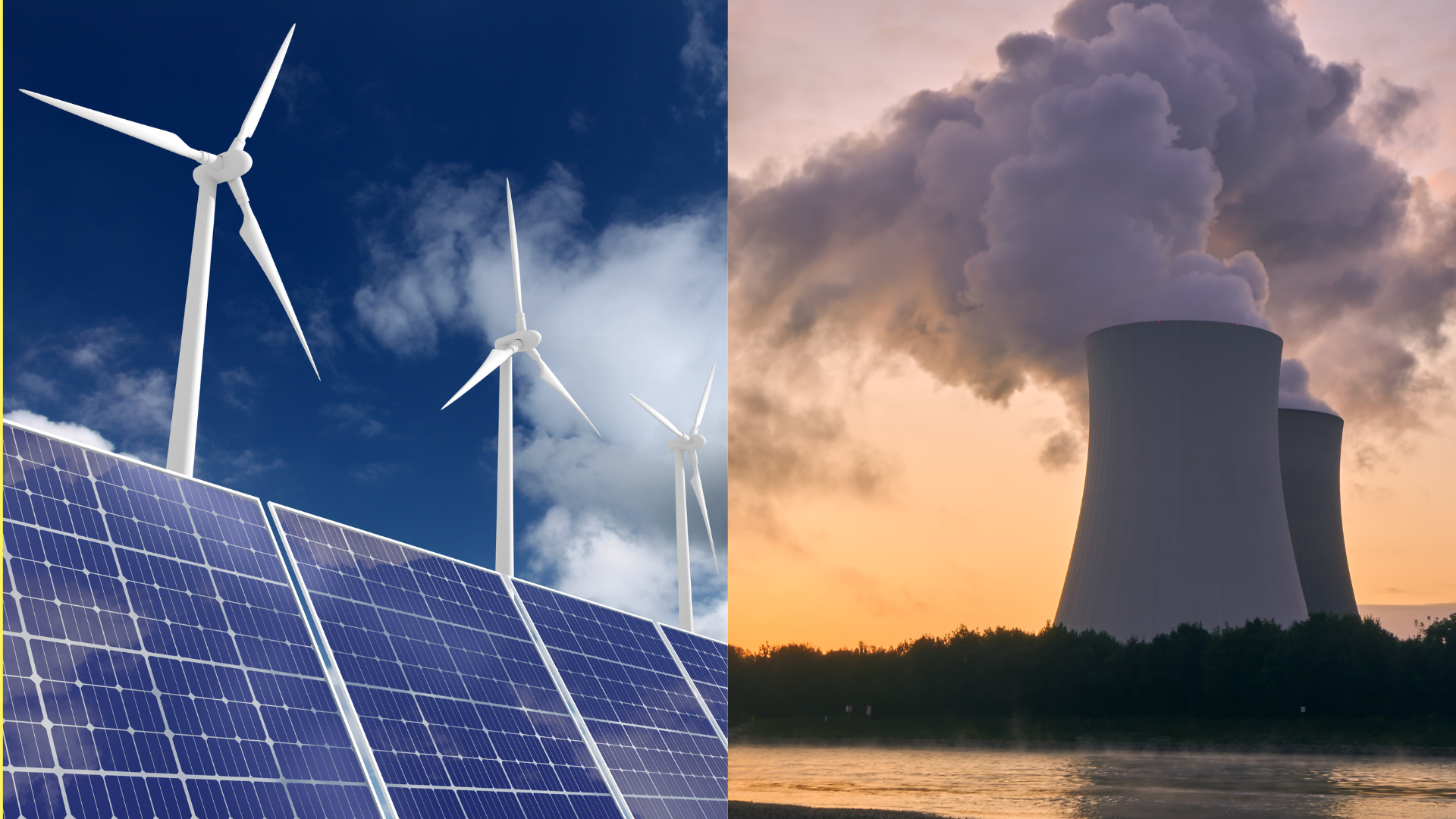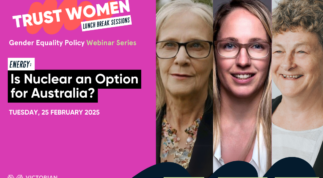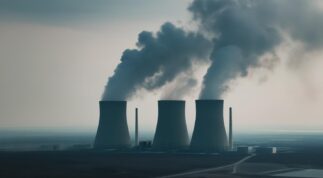On Tuesday 25 February 2025, the Victorian Women’s Trust proudly presented the first of our Trust Women: Lunch Break Sessions, a six-part policy webinar series designed to break down some of the most important gender equality policy challenges facing Australia today.
Australia has long debated the role of nuclear power in its energy future. In Energy: Is Nuclear an Option for Australia?, our expert panel discussed Australia’s past and present nuclear policy, outlined the nuclear expansion proposals put forward by the Nationals and Liberals; and examined the key players actively opposing these plans.
Speakers included Wendy Farmer (Friends of the Earth community organiser and President of Voices of the Valley); Alex Engel-Mallon (Director of Advocacy and Policy at the Climate Council) and Mary Crooks AO (Executive Director of the Victorian Women’s Trust) as moderator.
Key takeaways
1. Australia’s Energy Future Lies in Renewables
- Renewable energy is already the cheapest and fastest-growing source of electricity in Australia.
- Investment in solar, wind, and battery storage is creating jobs and reducing power prices.
- Unlike nuclear, renewables are scalable, cost-effective, and align with Australia’s abundant natural resources.
2. Nuclear is Too Slow and Too Expensive
- Nuclear power takes decades to plan, approve, and build, making it unviable for Australia’s urgent energy transition.
- The estimated cost of nuclear power is far higher than renewables, with new plants exceeding initial budgets and timelines.
- Every dollar spent on nuclear is a dollar not spent on faster, cleaner energy solutions.
3. Economic and Environmental Costs Outweigh Benefits
- Nuclear reactors require enormous amounts of water for cooling—some estimates suggest a single plant could use as much as Sydney Harbour’s worth of water each year.
- This poses a major challenge in a country like Australia, where water security is already a growing concern.
- The environmental cost of nuclear isn’t just about waste; it also affects water resources and ecosystems.
- Managing nuclear waste is a long-term issue, with no permanent disposal solution currently available in Australia.
4. Australia Lacks the Infrastructure and Public Support
- Australia has no existing nuclear power plants, making the transition costly and complex.
- Public opposition to nuclear power remains high, particularly due to safety concerns and waste management issues.
- The risks associated with nuclear power—including accidents and potential security threats—make it a less attractive option compared to renewables.
5. Renewables Are Ready Now
- Solar and wind power are already providing clean, reliable energy across Australia.
- Advances in battery storage and grid technology ensure that renewables can meet demand without the risks of nuclear energy.
- Investing in renewables strengthens Australia’s energy independence and resilience against climate change.
Conclusion
Nuclear power is not the answer for Australia’s energy future. It’s too expensive, too slow, and too risky, while renewables offer a cheaper, safer, and more sustainable solution. The path forward is clear: investing in renewables will power Australia efficiently and responsibly.
Further Resources
After the Smoke – ABC iView
Seize the Decade – Climate Council report
10 Practical Policies to Help the Next Australian Government Cut Climate Pollution – Climate Council
Why Nuclear Energy is not Worth the Risk for Australia – Climate Council
From February to June 2025, we’ll host expert-led discussions on key issues such as nuclear energy, early childhood education, abortion access, housing, youth mental health, and tech-facilitated abuse. Each session will offer insights from leading thinkers, advocates, and policy experts, helping us better understand the blockers to progress and, more importantly, the pathways forward. Learn more about our upcoming webinars. They’re all free but registration is essential.



![Trust Women: Lunch Break Sessions | Policy Takeaways - Nuclear Power in Australia [Webinar]](https://www.vwt.org.au/wp-content/uploads/2025/02/BLOG_Nuclear_webinar_takeaways-323x178.png)